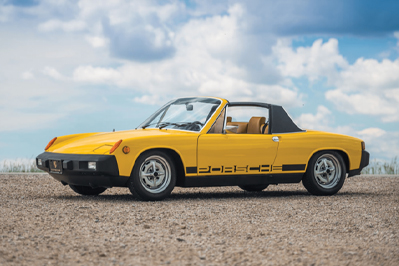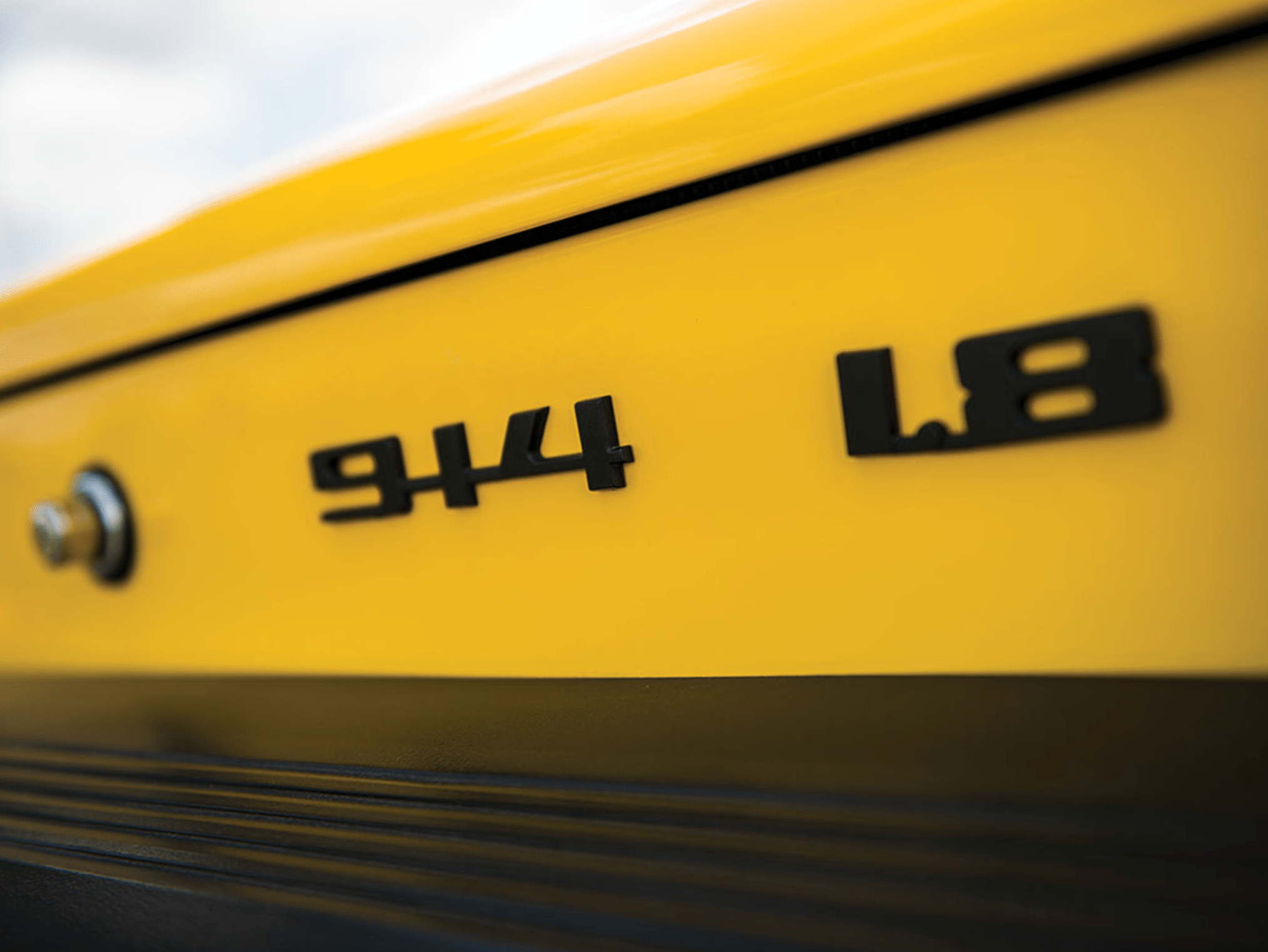$93k for an “Unpretty” and “Slow” Porsche.
At just under $14.1 million, the 1970 Porsche 917 sold by Gooding & Company at its Monterey sale was the highest ever paid for a Porsche at auction. But that was expected. At the opposite end of the price spectrum, another Porsche really raised eyebrows: the 1975 914 1.8 that RM Sotheby’s sold for $93,500.
That was no typo: the sold car was a 1975 four-cylinder 914, not one of the much rarer six-cylinder 914/6 models, of which just 3,300 were made through 1972. It didn’t even have the optional 2.0-liter four-cylinder engine. Hagerty shows a high value of $27,900 for a “#1 concours” condition 1975 914 1.8. In fact, Hagerty’s valuation experts were among those taken by surprise, as revealed in their blog post: “Unicorn-like status always brings a high price, but few people on the Monterey peninsula predicted an amount like this would be offered. And no, your 70,000-mile example is not worth $50,000 now.”
Museum Piece
What was so special about the RM Sothebys 914 to draw $93k? It was in like-new condition with 3,192 original miles, that’s what. For anyone looking to re-live the 1970s in a Summer Yellow roadster, this was the car. The interior was Buckskin leatherette, a.k.a vinyl. Options included a tinted windshield and a center armrest console, at a combined $95 extra. Air conditioning was installed by one Porsche dealer in 1976, and running lights by another in 1978.
The auction company’s description as “one of the finest original examples in the world” was not hype. You’d be hard-pressed to find another 914 in the same condition. Certainly, fans of the 914 were awed to see one preserved in such condition. Many 914s rusted or were driven to oblivion decades ago. This one could be in a museum.
Porsche 914: A Real Porsche?
Long ignored and even snubbed by some Porsche enthusiasts for its mixed Porsche and Volkswagen parentage, the 1969-1976 914 is getting more love these days. At the 2015 Amelia Island Concours d’Elegance, the 914 was one of the honored models. But speaking of love, it’s funny how, when Porsche cites mid-engine heritage for its Boxster, it skips the mid-engine 914 and goes back to the 718 Spyder racecar of six decades ago.
Back when they were separate companies, Porsche and Volkswagen jointly developed the 914 to be sold as an affordable sports car by both brands. Porsche handled design and engineering and also supplied chassis parts.
The initial standard engine was Volkswagen’s air-cooled, fuel-injected 1.7-liter flat four from the “big” 411 sedan, paired with a 5-speed manual transmission. The engine made just 76 horsepower. Karmann, which built the Karmann-Ghia sporty model for VW, assembled the 914, as well.
Economies of scale from the collaboration enabled Porsche to offer the 1970 914 for $3,500 in the United States, much lower than a 911. The 914 faced stiff competition from the similarly priced and much more powerful and faster Datsun 240Z. The 914/6, with a 110-horse 2.0-liter six-cylinder engine, was still off the 240Z’s pace and cost $6,100. In true Porsche fashion, however, the 914/6 GT competition version established a stellar track record, winning the GT class and taking sixth overall in the 1970 24 Hours of Le Mans and also winning the first IMSA GT driving championship.
Most of the 119,000 914s built were sold in America, where it was Porsche’s best-selling model. In Europe, the 914 was branded “Volkswagen-Porsche,” which hurt sales.
“Unpretty?” Is That Like “Good Personality?”
The 914’s squared-off design was polarizing and the antithesis of the rounded Porsche 911. Road & Track called it “unpretty.” The cabin, though austere, earned praise for its spaciousness and the one-piece removable roof panel that could be carried in the trunk.
Motor Trend named the 914 its 1970 Import Car of the Year. Car & Driver coaxed zero-to-60 in 11.3 seconds from a 1970 model, on par with the MGB and Fiat 124 Spider. In 1973, a 99-horsepower 2.0-liter four-cylinder engine became optional. An 84-horsepower 1.8-liter four, as in the RM Sothebys car, replaced the 1.7 as the standard engine for 1974.
Ah, the times were simpler and slower.

Image Source: Jim Koscs of Audatomive Communications
Written by Jim Koscs, Audamotive Communications
For Premier Financial Services






